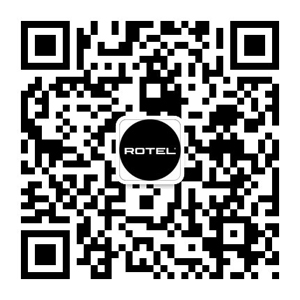Wsparcie Rotel
Jesteśmy tu po to, by odpowiedzieć na wszystkie pytania dotyczące produktów i urządzeń Rotel, a także by otworzyć drzwi do świata dźwięku o wysokiej jakości.
The RDV-1092 and RDV-1093 both utilize a 12-bit/216MHz video digital to analog converter.
The 25-pin DB25 input on the RMB-1075 and RMB-1095 offers an alternative connection for the input signal rather than using the standard RCA inputs. The signal quality is comparable for either connection method, the main advantage of the DB25 being the convenience of connecting a single cable as opposed to five separate RCA cables. While Rotel does not manufacture cables, many audio cable manufacturers carry or can construct an RCA-to-DB25 cable for this purpose. For those wishing to wire their own DB25 cable, Rotel provides the pin configuration for this cable below.
The default crossover frequency is set at 100Hz for these models.
The default password to save the User Default settings is '0000'.
The Factory Default setting will reset the unit to its original factory configuration, erasing all settings on the unit. The User Default option allows customization of the processor to reset to a specific setting whenever a User Default is performed. This is done by calibrating the processor to the desired settings, then on the DEFAULT SETUP menu changing the USER DEFAULT SET option to YES and pressing the Enter key on the remote. The screen will change back to the Main Menu, and the current settings will be retained as a User Default. Please be aware that on models earlier than RSP-1572/RSX-1562, after setting the User Defaults if at any time a Factory Default is performed the User Default settings will be erased.
If prompted for a password to set the User Default, the master password is '0000'.
XLR cables use differential designs and, as their name implies, they only let differences pass. They use two signal paths, inverted (negative) and non-inverted (positive), plus a ground. The inverted and non-inverted signals are exact reflections of each other, so where one has a peak, the other has a trough. This differential design helps cancel any noise injected in the line and may provide better sound than RCA connections.
Single-ended signals use a single conductor in the cable which typically also uses a shield wire to make a ground connection. The shield cannot be 100% effective, so noise picked up by the signal conductor becomes forever part of the audio signal is amplified through the signal path.
The RLC-1080 has all of the features of the RLC-1040, but also comes with a back-up power supply in the form of an internal battery. Further, up to two additional batteries can be connected to the RLC-1080, which will allow uninterrupted enjoyment of your electronics for some time during a black out.
The PC-USB input on your Rotel product supports two different audio classes. USB Audio Class 1.0 is the original format and supports up to 96kHz audio. This is the default setting as all computers will support this class. USB Audio Class 2.0 is a newer standard and supports audio up to 192kHz. Not all USB hardware supports this format but most computers made in the last 5 years should support this.
Do note that if you are using a Windows PC for audio and wish to play 192kHz Audio, you will also need to install drivers on the computer to handle this. The USB audio drivers are included on a CD with the product, or they can also be downloaded here.
This input is the connection used to interface the Rotel unit with control systems such as those manufactured by Crestron or Control4 for example, using RS232 protocol to allow control of the unit. Rotel provides the protocol for control on our downloads page, but some programming experience is required in order to program the interface software between the Rotel unit and any control device.
This connection is also used to update the internal software in the device as well.
扫一扫以下二维码或者搜索微信公众号即可关注,获取最新鲜的ROTEL资讯!
微信公众号:rotel-hifi
